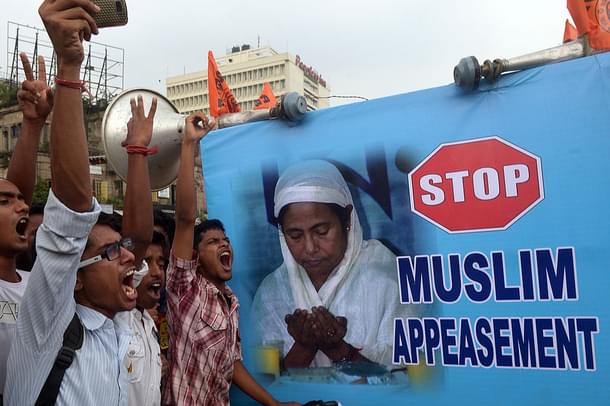Politics
West Bengal: How Didi's Own Did Her In
Partha Pratim Dasgupta
Mar 17, 2021, 11:15 PM | Updated 11:10 PM IST
Save & read from anywhere!
Bookmark stories for easy access on any device or the Swarajya app.


"Like art, revolutions come from combining what exists into what has never existed before".
Feminist icon Steinem’s quote is both inspiring and an apt one in the context of shaping Sonar Bangla.
Perhaps, we will see the dispensation in the offing taking a cue from it. It was in 2011 when entire Bengal was looking forward to a leader to navigate the state to prosperity.
It was perhaps the only ray of hope for 10 crore people to overcome the turmoil that they had had to endure for decades.
The state had lost out in the battle to sustain its position of pride as an economic, cultural and academic centre, which was boosted by Dr S.P. Mukherjee and Dr. B.C. Roy after Independence.
Thereafter, Bengal had to endure a visionless leadership coupled with unrest arising out of Naxal movement and subsequently leftist rule for more than three decades.
These 34 years proved too costly for the state in the long run. Closures, strikes, lockouts, gheraos, including physical assaults and murders, led to flight of industrialists and declining investments.
The result was clearly visible in terms of dwindling jobs, brain drain, with no sign of any investment in the near future. It was obvious that Bengal desperately needed a stable leadership to change the people’s fortunes.
Fortunately, Bengal found one and we saw the emergence of the fiery Mamata Banerjee as the undisputed choice of the people to rebuild the state from shambles.
The victory in 2011 was never easy, as taking on the mighty left required resources to counter violence, overcoming fear, and ability to endure and negate the adversities unleashed by the regime.
But Bengal seemed truly poised to witness history in the making — another daughter joining the list of daring women who fought and overcame all the odds to change the narrative of Bengal and India: Matangini Hazra and Preetilata Wadedar for their role in the freedom struggle; Rani Rashmoni and Maa Sharda Devi for their immense contribution in reforms in the spiritual space; Begum Rokeya who defied all odds to define the true meaning of feminism through her writings.
Indeed, Bengal chose her daughter Mamata to steer the aspirations of its people. Didi did extremely well to establish herself as a promising political leader and her strategy to dislodge the leftists worked wonderfully for her, poaching the very machinery that was painstakingly built by the leftists.
Her task was made easy by visible cracks within the CPM. Rushing in Amit Mitra from FICCI was another right move by Mamata, giving positive signals of an industry-friendly government in the offing.
No wonder she won with a thumping majority. But regrettably, the first five years showed no visible efforts being made either in the economy or in the investment climate.
Obviously, she had little to be proud of on this front and hence was compelled to make a major mistake of using the same machinery to propel her to power the second time.
She was back to power no doubt, but in the process, the machinery realised that the balance of power had shifted disproportionately towards them, leaving her with very limited options to steer back to course.
History will remember this period of 10 years as a national waste. Strategic choices that one makes come with a limited shelf life and if repeated often, may end up as a liability.
In the run-up to elections, the element of surprise is critical and it appears that with Mamata’s machinery being literally defanged, it may run out of steam this time.
She must be ruing the fact that she allowed the golden opportunity to change Bengal’s economic landscape to be hijacked, leaving her virtually in the hands of those who had their own interests to pursue.
As a consequence, non-performance was clearly visible and the government had to shift to appeasements, concessions and divisive approaches to bury it, grossly compromising the fundamentals of long-term socio-economic wellbeing.
In fact, during her second term, Bengal perhaps had a bit of an overdose of these short-term approaches. In retrospect, it is clear that had she delivered in the first five years with proper governance and commitment, the people of Bengal would have ensured her return to the saddle again and again, sidelining the very machinery that was allowed to outlive its purpose.
Unfortunately, it was not so, and we saw a steady fall of a loved and adored daughter in the eyes of the people due to sub-optimal governance. The question therefore is: Has she missed the bus of joining the bandwagon of the illustrious daughters of Bengal altogether? Or will we see her bouncing back after five years in the wilderness?
Half a decade is indeed a long time in electoral politics unlike in sports or the corporate world where you can resurrect quickly, like Sourav Ganguly did.
The bigger question is — Can she stitch her party back in the present election? With a depleted election machinery, overcoming anti-incumbency and large-scale desertion is indeed a tall ask.




